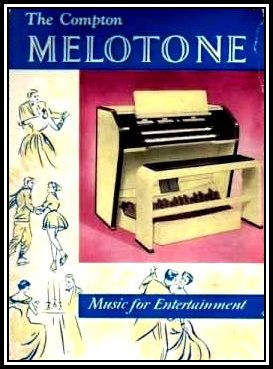THE ODEON THEATRE
WESTON SUPER MARE
&
THE COMPTON THEATRE ORGAN
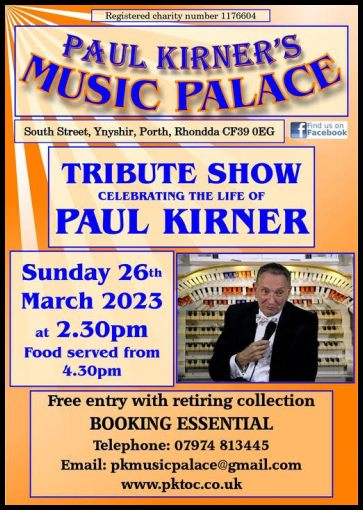 CLICK HERE to watch this Tribute
CLICK HERE to watch this Tribute
CLICK HERE to listen to A TRIBUTE TO PAUL KIRNER
given by Damon Cox & Ben Snowdon, as part of The Organist Encores Series
——-oooo000oooo——-
PART 3: THE THEATRE ORGAN
& HISTORY OF THE
THE ODEON THEATRE/CINEMA
WESTON SUPER MARE
-oOo-
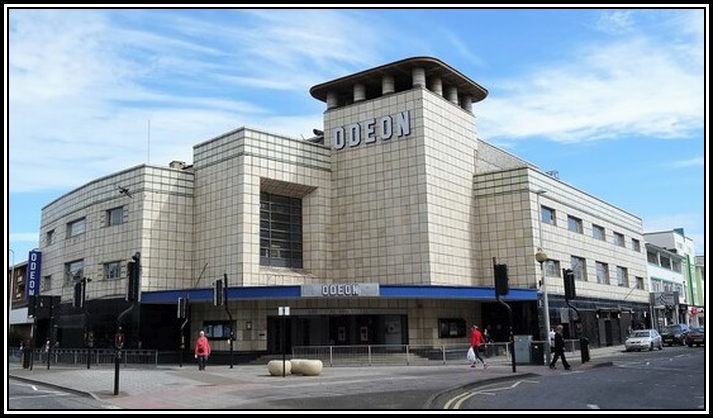 The Odeon Theatre Weston Super Mare (2017)
The Odeon Theatre Weston Super Mare (2017)
(Photograph provided by Paul Bland)
-oOo-
On Monday, June 5th, 2023, the Odeon Theatre/Cinema Weston Super Mare closed with no plans to re-open anytime soon. Closure came eighty-eight years and one month after its opening on May 25th, 1935. The reason given for this action was the falling number of patrons.
On Sunday, May 21st, 2023, the renowned Theatre Organist, Michael Wooldridge, gave what would seem to be the final concert (for the present that is!), which was sponsored by the Theatre Organ Club.
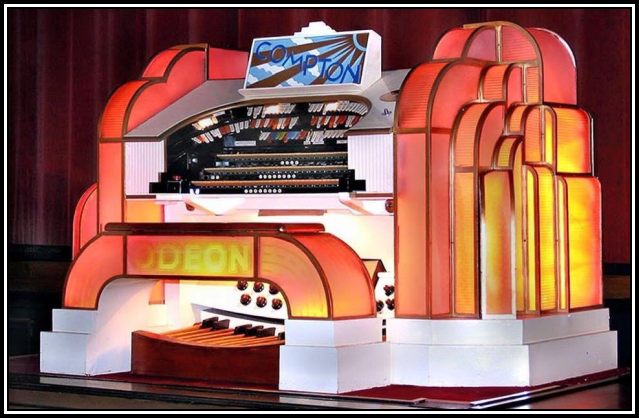 The Compton Theatre Organ of The Odeon Theatre Weston Super Mare
The Compton Theatre Organ of The Odeon Theatre Weston Super Mare
complete with Cascade Console Case
-oOo-
THE COMPTON THEATRE ORGAN
-oOo-
As I have said earlier, Oscar Deutsch considered Theatre Organs to be an unnecessary expense and a distraction from the film being shown in the Theatres of his Circuit. However, he allowed six Odeon Theatres to be equipped with Compton Theatre Organs together with a Cascade Console Case, and these were at:
- Leicester Square: the Theatre was built in 1937 as the Circuit’s Flagship Theatre; the Theatre Organ has 5 manuals & 17 ranks with Grand Piano and Melotone;
- Haverstock Hill: built in 1934 and was the Circuit’s Flagship Theatre until the Odeon Theatre Leicester Square opened; the Theatre Organ had 3 manuals & 6 ranks together with a Solo Cello;
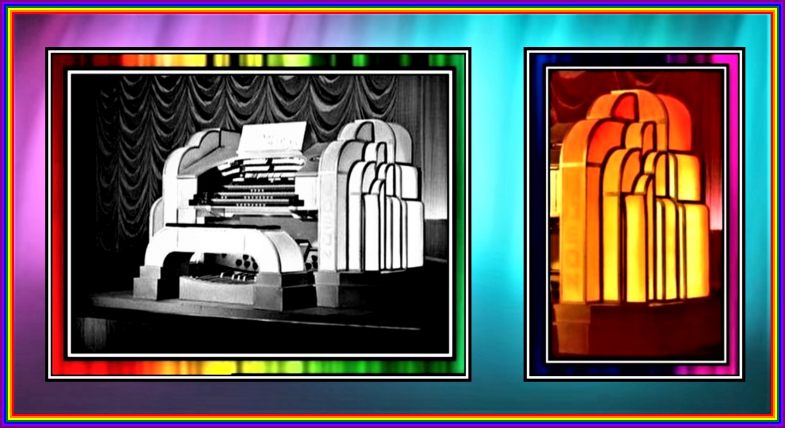 Left: The Theatre Organ of the Odeon Theatre/Cinema Haverstock Hill
Left: The Theatre Organ of the Odeon Theatre/Cinema Haverstock Hill
Right: Detail of the Cascade Console Case
- Swiss Cottage: built in 1937; the Theatre Organ had 3 manuals & 8 ranks together with Grand Piano and Melotone;
- Worthing: built in 1934; the Theatre Organ had 3 manuals & 6 ranks;
- Wealdstone: built in 1934; the Theatre Organ had 3 manuals & 5 ranks (I have been unable to discover if the Theatre Organ was equipped with either a Grand Piano &/or Solo Cello); and
- Weston Super Mare: built in 1935; the Theatre Organ has 3 manuals & 6 ranks including a Solo Cello.
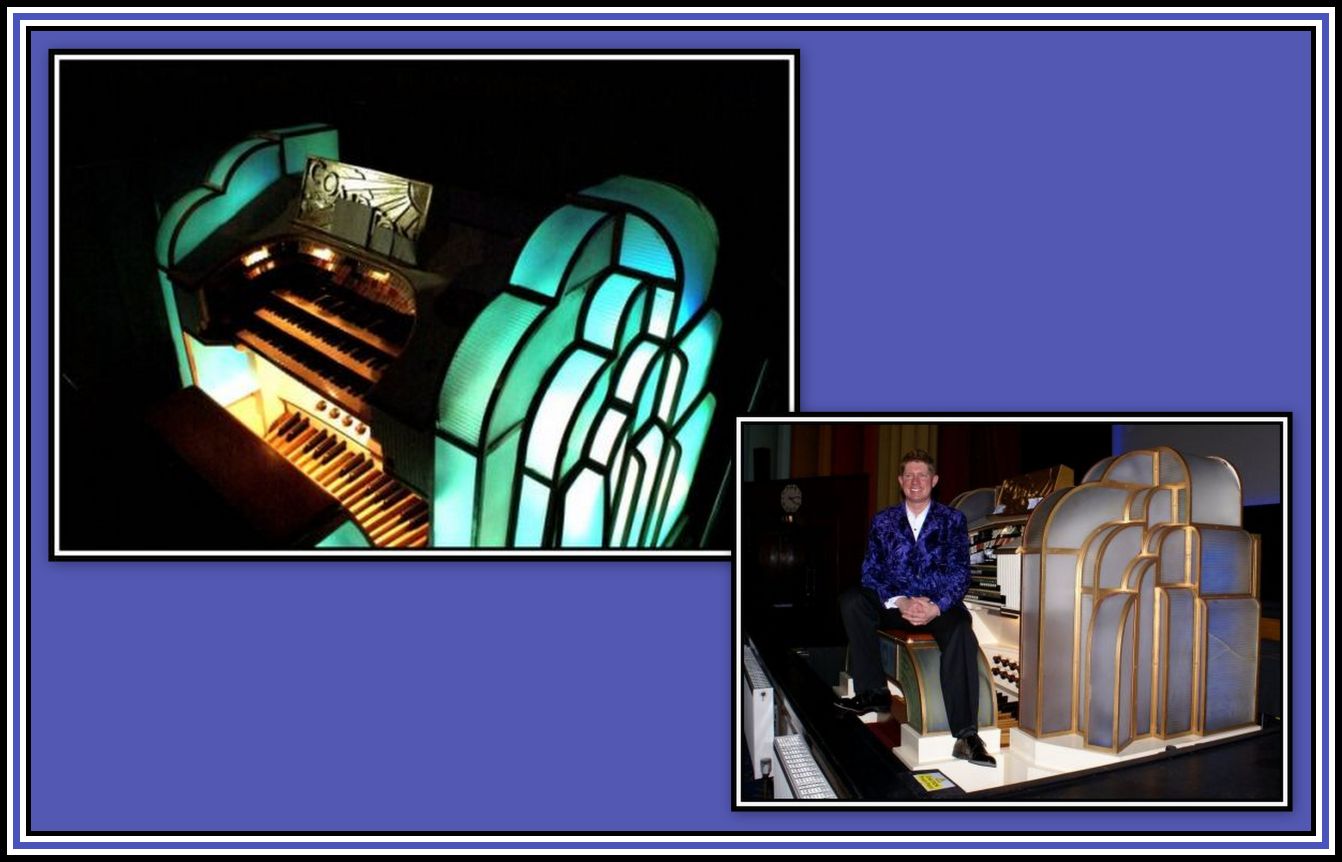 Left: The Compton Theatre Organ and Cascade Console Case
Left: The Compton Theatre Organ and Cascade Console Case
of the Odeon Theatre/Cinema Weston Super Mare;
Right: Robert Wolfe at the Console
The 6 ranks of pipes (plus the Solo Cello) of the Compton Theatre Organ of the Odeon Theatre/Cinema Weston Super Mare are:
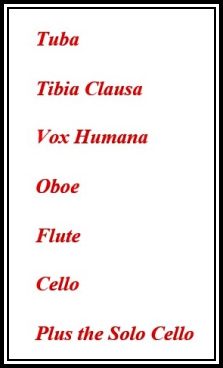
Although the Organ did not have the common Compton feature of a Melotone, it does have a Solo Cello. This stop involves a mechanical bow and pitching fingers, operated directly from the organ console.
The console is located in the centre of the orchestra pit on a lift and the sound is produced in two rooms full of pipes, glockenspiel, xylophone, vibraphone, drums and cymbals that are housed above the stage.
-oOo-
COMPTON INNOVATIONS
SOLO CELLOS & MELOTONES
-oOo-
John Compton was responsible for introducing the Solo Cello, a device intended to replicate the string instrument. It was first installed in the Theatre Organ (3 manuals & 10 ranks) destined) for the Ritz Cinema New Southgate in December 1933.
The Solo Cello was in fact one string that was played (i.e. bowed) by a rotating resin wheel. With the depression of a console key, the wheel touched the single string and caused it to vibrate. The vibrating string was made to produce the required note (i.e. at the desired harmonic point) when one of a number of small mechanical fingers applied pressure to it. A small current was applied to the string enabled the vibrations to be collected by an electromagnetic pick-up (i.e. in a system similar to that employed by a modern electric guitar). The action of collecting this vibration within the electromagnetic field of the pick-up created a small voltage, which was fed to an amplifier and converted to a sound. The sound, when fed to a horn loudspeaker could, as a result, could be heard.
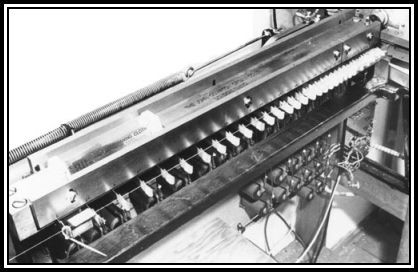 The Solo Cello of the Compton Organ of the Dreamland Cinema Margate
The Solo Cello of the Compton Organ of the Dreamland Cinema Margate
Many organists disliked the sound produced by the Solo Cello, which may help explain why it was discontinued after only twenty organs were built containing this device. However, as it is a fairly complex device, it could be unreliable and did not always function as required.
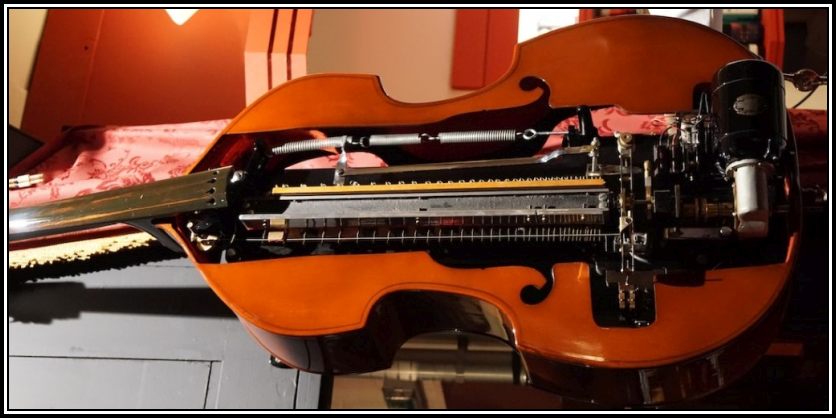 The Solo Cello of The Cinema Organ Society
The Solo Cello of The Cinema Organ Society
(Reproduced with the permission of Mr. David Schuster of The Cinema Organ Club)
Click here to hear a demonstration of the Solo Cello
The final Solo Cello included with an Organ was with that (4 manuals &16 ranks) installed at the Theatre Royal Dublin in September 1935.
In 1932, another innovation was introduced by Compton. Leslie Bourn, a technician at the Company, developed a system whereby an audio signal was generated from waveforms engraved in a conductive plate by the use of rotating discs thereby providing new tonal effects by purely electrical means.
This discovery formed the basis of what would lead to the development of an early form of Electronic Organ. The Electrical Unit became known as The Melotone and was incorporated into a total of seventy-four Compton Theatre Organs built between 1935 and 1939 and played by the organist, as if it were an additional rank.
Whether used alone or in combination with pipe ranks, it furnished tone colours otherwise not available. Expression was given by the normal use of the Swell Pedal and Tone could be made to die away gradually by the Echo Control.
Note: Compton later developed a range of Electronic Organs and those used in the entertainment field were marketed under the name Melotone (see the brochure above).
-oOo-
Al Bollingham playing a Compton Organ fitted with a Melotone
-oOo-
Click here to go to the GLOSSARY of The Theatre Organ
-oOo-
Another innovation introduced by The Compton Organ Company was Illuminated Console Cases and it took out a patent for their design. During the time that The Company offered such a feature, a number of designs were developed including the Illuminated Sunburst, ABC (Reeded Glass), Cascade, Rainbow and Pillar & Vase. In addition, a number of Special Console Cases were designed for installation at specific locations.
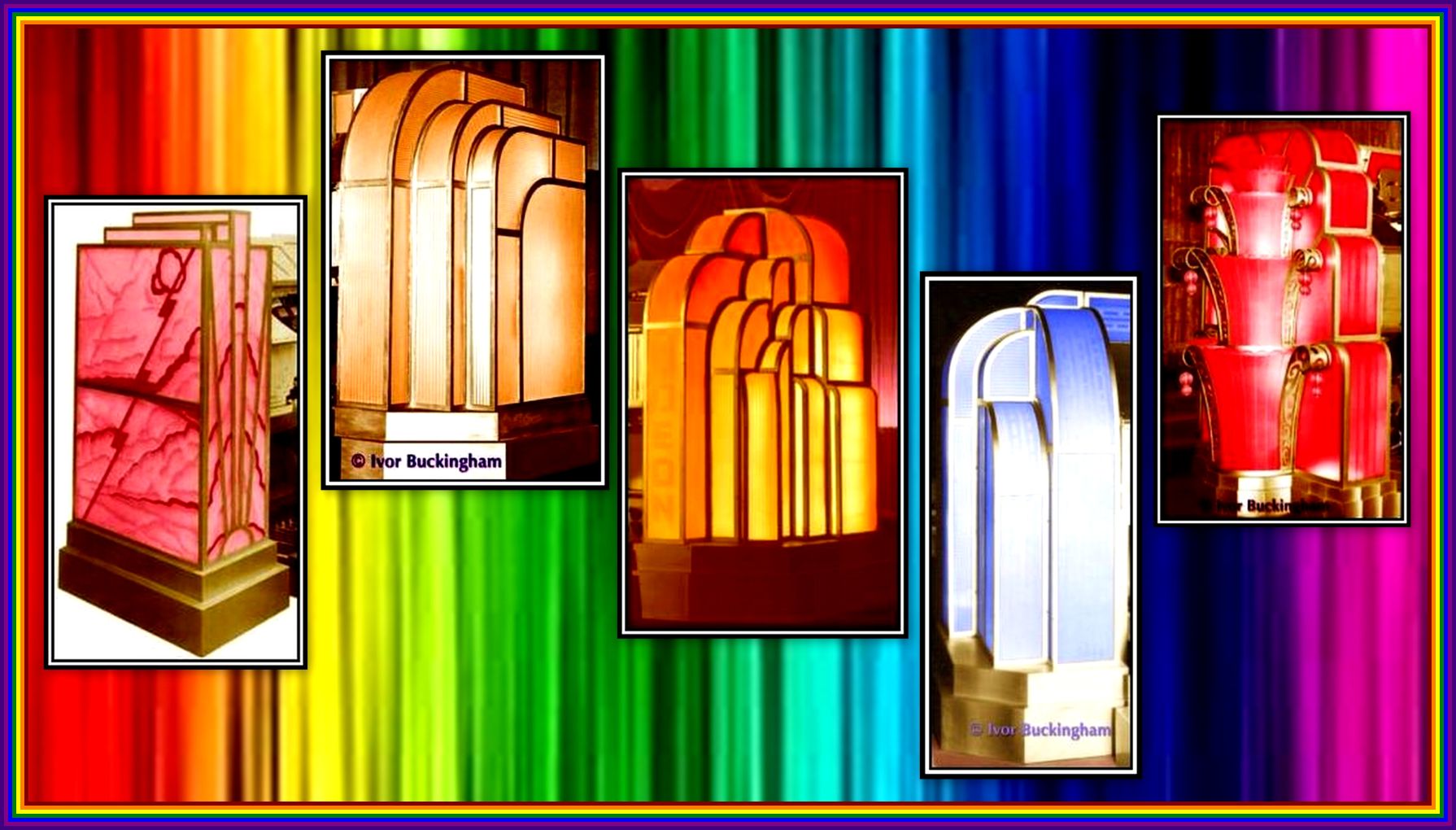 Types of Illuminated Side Pillars built for Compton Consoles
Types of Illuminated Side Pillars built for Compton Consoles
From Left to Right: Illuminated Sunburst, ABC (Reeded Glass), Cascade,
Rainbow and Union (Pillar & Vase)
The Theatre Organ of The Odeon Theatre/Cinema Weston Super Mare was fitted with a Cascade Illuminated Console Case.
-oOo-
THE DECLINE IN INTEREST OF
THE THEATRE ORGAN
-oOo-
With the passage of time, musical tastes changed and audiences began to lose interest in The Theatre Organ. Cinemas Circuits began to no longer require the presence of organists to play musical interludes at performances and soon Theatre Organs were being removed and either sold or broken up.
In addition, with the increase in popularity of Television-in-the home, cinema audiences began to decline from the mid-1950s onwards. This led Cinema Circuits to look for other ways to increase their revenue. Some cinemas were closed and quickly demolished while others were converted into Bingo Halls. Other cinemas had their auditoria divided into two- or three screens in an attempt to lure patrons back to going-to-the-pictures by the offering of a greater choice in film. Unfortunately, the conversion of single-screen-cinemas into Multiplexes did not always bring about an increase in patronage. Sadly, these changes generally led to the further removal of Theatre Organs and often their loss.
-oOo-
By the early 2023, the number of Theatre Organs remaining in their original location, and still functioning, had declined to a mere three instruments. These Organs remain installed at the Odeon Theatre/Cinema Leicester Square, the Odeon Theatre/Cinema Weston Super Mare and the Plaza Theatre Stockport.
-oOo-
THEATRE ORGAN CONCERTS AT THE
ODEON THEATRE/CINEMA
WESTON SUPER MARE
-oOo-
Despite the decline in popularity of the Theatre Organ, there remained a group of devotees that still enjoyed its sounds and attended the Concerts that were organised where such instruments remained either in place or else where they had been re-installed elsewhere.
Concerts were organised at the Odeon Theatre/Cinema Weston Super Mare with Screen 4, the former front stalls area where the Proscenium, Stage, Organ and Orchestra Pit were still visible.
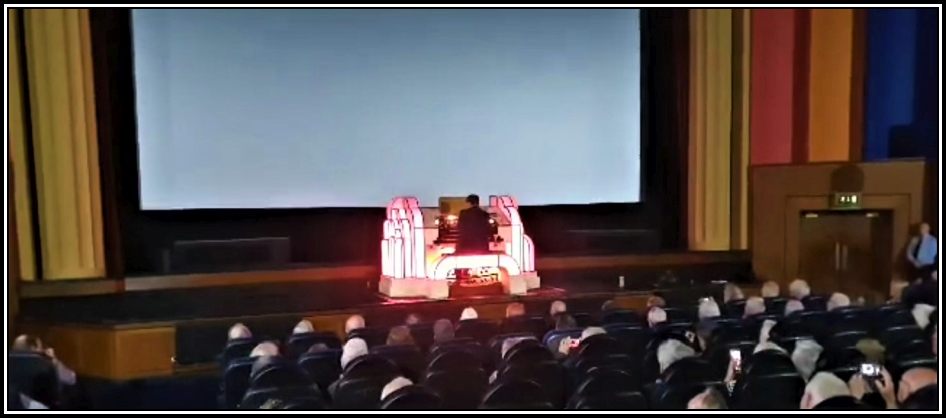 At a Concert given in Screen 4
At a Concert given in Screen 4
(Note the remaining outline of the former Odeon Clock over the Exit)
-oOo-
The following collages illustrate some of the presented Concerts given by Organists who accepted an invitation to perform here:
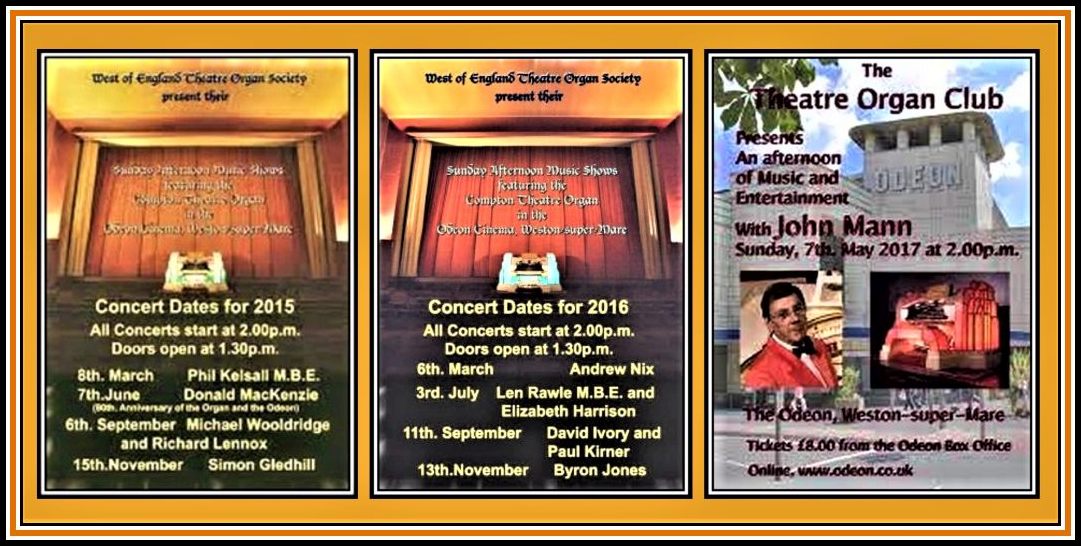
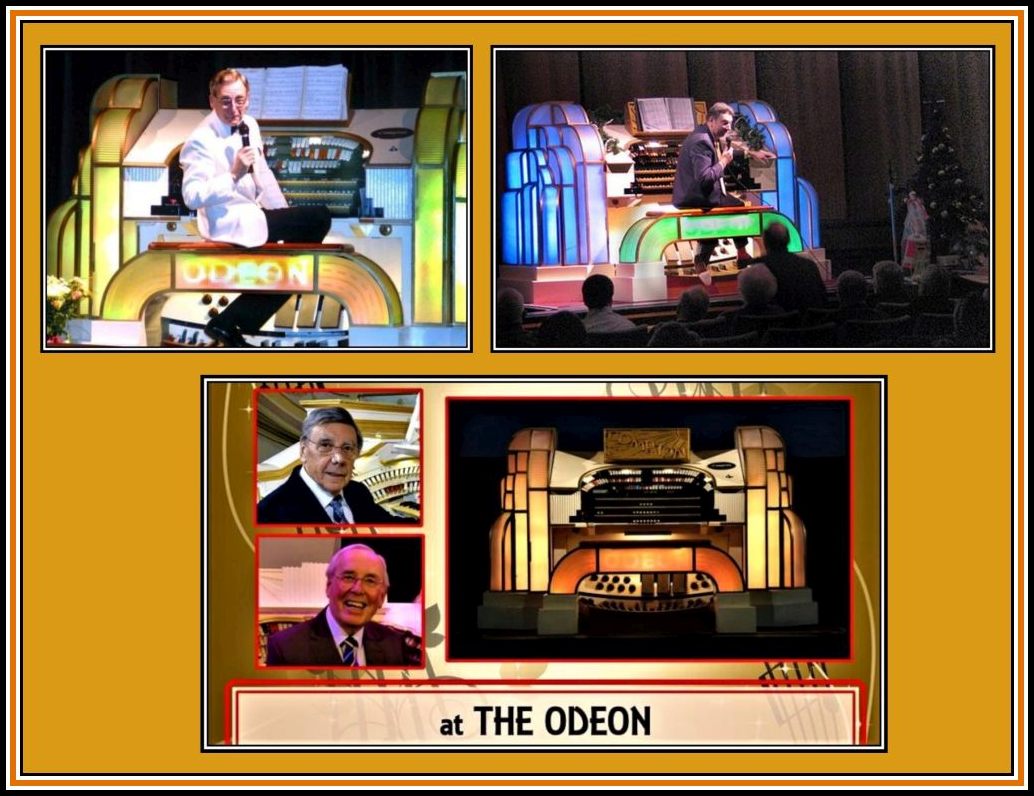 Top Left: Len Rawle; Top Right: Paul Kirner; Bottom: John Mann & Keith Beckingham
Top Left: Len Rawle; Top Right: Paul Kirner; Bottom: John Mann & Keith Beckingham
-oOo-
The penultimate Concert, sponsored by the Theatre Organ Club, was held on 20th November, 2022 and featured Keith Beckingham and John Mann. It was attended by a near capacity audience.
-oOo-
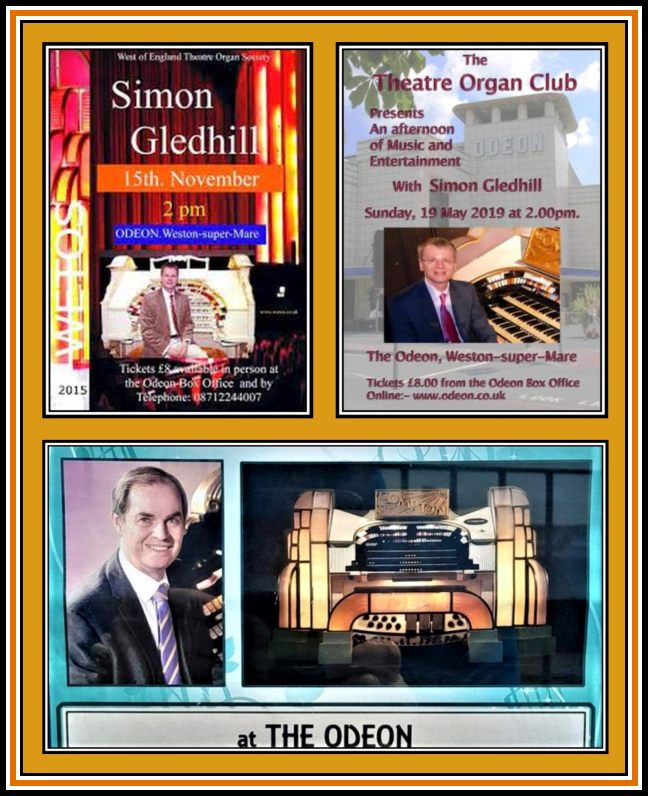 Top: Simon Gledhill; Bottom: Michael Wooldridge
Top: Simon Gledhill; Bottom: Michael Wooldridge
Once the Theatre/Cinema was turned into a Multiplex in 1973, seating for Concerts was reduced. Later in 1991, when Screen 4, the former front stalls area, was added, the Organ could only be seen, and enjoyed, from here.
-oOo-
WHAT WAS IT REALLY LIKE TO PLAY
THE THEATRE ORGAN OF THE
ODEON THEATRE/CINEMA
WESTON SUPER MARE???
-oOo-
What now follows is a number of accounts given by Theatre Organists who have played this instrument at one or more concerts presented by The West of England Theatre Organ Society and later by The Theatre Organ Club:
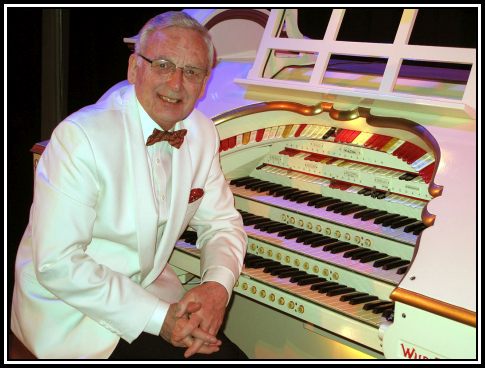 Len Rawle
Len Rawle
Sadly I was not at the last concert. However I have appeared at the Odeon Weston-super-Mare on several occasions following on a period when I was called upon to offer some technical help to make the instrument a little more effective.
My first visit to the building was prior to the main auditorium being reduced in seating capacity. At that time I found this comparatively small Compton rather ineffective particularly in its bass tones. There was some discussion about adding additional 16 foot pipes unenclosed on the back of the stage but this was superseded by the addition of electronic additions to the pedal department. Large bass boosting loudspeaker systems were installed in the columns either side of the stage and a digital reverberation system was installed to counter the particularly dry acoustics demanded by today’s film presentations
The little Compton became more interesting from both the organists and listeners points-of-view, when the cinema was twinned. It suddenly became much more effective in the smaller space. With it’s cleverly thought out coupler third manual, this modest 6-rank organ became really quite fun to play. In addition, the audience loved the console rising on its central lift with its colourful illuminated glass surround in full working order.
When I first set foot in the chambers high on the roof of the building, I noted two fascinating features. First, the sound was ducted a very long way down into the auditorium via two large tone-ducts. The other feature was that the chambers also contained a non-working and very rare Compton Solo Cello unit.
The audiences at Weston Super Mare really appreciated the organ being here and being brought back into use and I enjoyed all of my Concerts there hugely. It appears that Weston may be losing a little treasure.
The talented team from South Wales who took on the responsibility of maintaining, tuning and presenting organ concerts in recent years, deserve all our thanks for keeping it alive, not to mention our hopes for its long-term future, perhaps in another venue.
-oOo-
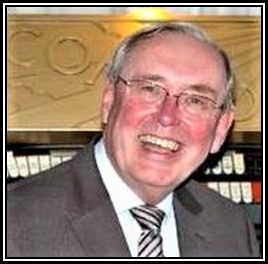
Keith Beckingham
There is always something special playing an organ in its original cinema location. The Compton at the Odeon, Weston Super Mare punched above its weight, having only six units. It was never going to blow the roof off but with careful registration it could provide a varied tonal palette to suit a wide repertoire. Yes, I would have liked to see a Diapason to beef up the accompaniment, but that is a personal preference.
It is a tribute to Compton craftsmanship that the organ functioned so well despite being used only occasionally.
I have fond memories of the Concerts I gave at the Odeon and sincerely hope the Compton will be heard again
-oOo-
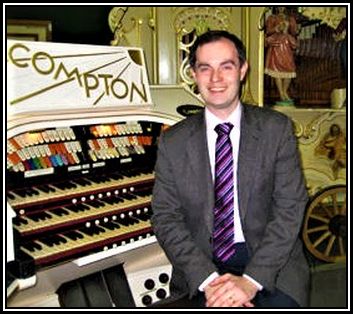 Michael Wooldridge
Michael Wooldridge
The joy of playing the Compton at the Odeon Weston-Super-Mare is both that it is a lovely little instrument kept in good order by the team and, more than that, it still has the warm, in-theatre sound, which makes it a joy to play.
-oOo-
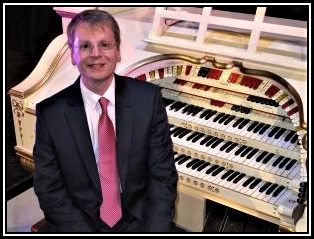 Simon Gledhill
Simon Gledhill
I played at the Odeon on several occasions and enjoyed the experience. It’s a shame that the building has closed and I hope it can be given a new lease of life in due course.
For me, two biggest challenges of the organ’s original design were in the bass department, where the choices at 16-foot pitch were Tuba and Tibia with nothing in between, and the absence of a Diapason, which would have been usual in a Compton six-rank scheme but was omitted from this one. The former situation was, in later years, helped somewhat by the addition of electronic 16-foot basses. I missed the Diapason but managed without it — you have to work with what you’ve got!
On the plus side, the organ has two colour reeds — Oboe and Vox Humana. It produces a surprising variety of sounds for its size, helped in particular by the Oboe, which is useful for ‘novelty’ sounds as well as adding brightness to the Tuba when the two are combined.
The Solo Cello is a taste which some people never quite acquire (!) but it’s good to know that a working example of this rare and fascinating device is preserved at Weston-super-Mare.
-oOo-
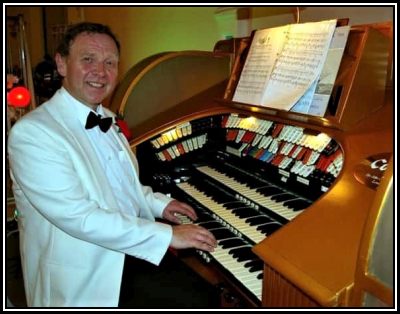 David Ivory
David Ivory
The Compton Organ of the Odeon, Weston Super Mare, whilst having just six ranks of pipes has a very big sound and a seemingly inexhaustible pallet of tone colours. The rare Solo Cello device, installed as part of the instrument, can, when handled with care, give a unique and (in the tenor register) quite a lyrical tone.
Although the chambers are way above the organist’s head there is no perceptible delay at the console. It is a fine example of what the Compton factory could turn out for a venue with a limited budget.
-oOo-
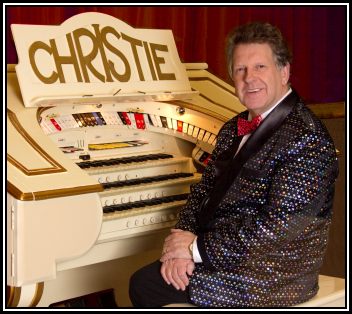 Byron Jones
Byron Jones
I will start off by saying that I had the experience of playing the Odeon Weston super Mare organ probably 50 years ago. The organ then had very little maintenance on it. Since then I am very pleased to say they’ve had several groups to service the organ that have kept the instrument up to the very good standard it is today.
I myself have played several concerts on it and, over the years, we have had some very good attendances. Unfortunately, during the last two years, there has been a decline in the size of the audiences. Not only at this venue, but generally throughout the organ world.
I was very fortunate to be at the last concert. Naturally, the last concert given in May proved to be a sellout. There is talk of someone buying the building and using it as his cinema once again and possibly featuring the organ. The organ itself cannot be sold as it is part of the listed building.
-oOo-
And finally a comment from a renowned Theatre Organist, who sadly never had the opportunity to play the organ here, but nonetheless admired its sounds:
Unfortunately, I never had the good fortune to lay my hands on the Weston instrument. However, I did attend the closing concert featuring Michael Wooldridge. It was poignant, yet heartening, to see a full-house standing, as we heard Michael coax many sounds and styles from the Compton.
I understand that it wasn’t unusual to have a good attendance at organ concerts here at the Odeon. Apparently the decision to close the cinema came from the continuing decline in cinema ticket sales.
Michael’s programme was suitably themed with nods to the location, the occasion, the instrument and other current environmental awareness. The Solo-Cello was featured (albeit – and thankfully in some peoples opinion – briefly,) demonstrating more of the engineering genius from the John Compton Organ Company.
The occasion provided far more than an organ concert, even one as illustrious as a closing concert. The opportunity to meet and catch up with like-minded individuals, many of whom hadn’t been seen since times pre-pandemic, was very welcome indeed. The parallel with families who only meet for Weddings and Funerals seemed apt. It would be good for us all to make extra efforts to visit live music venues other than our usual haunts.
I noticed how the sound from the chambers spoke into a latter-day wall from the multiplexing of the cinema. Talking to those that had heard the instrument in earlier days, I was left hoping that a future owner might have use for the building that could allow them to consider removing the screen from the circle area and letting the organ speak out, unhindered. I’m getting ahead of myself, let’s wish for saving the building and instrument first.
-oOo-
MAINTENANCE OF THE THEATRE ORGAN
-oOo-
Stephen Dutfield had been involved with the maintenance of the Organ for a number of years, and in 2000, he was joined by Ben Snowdon and they have continued this work until the present time.
-oOo-
LEN RAWLE wrote:
Regarding the early contribution of both my father (Les) and I, regarding the maintenance of the Theatre Organ, it really all started with us sharing our enthusiasm with the local crew for getting everything working as it should. Not being in the area ourselves, many hours were regularly spent on the telephone explaining to the maintenance team how to go about things and more importantly what not to do.
Once basic maintenance had been completed I was given the opportunity of commenting on the end result and discovered that the bass tones were weak and not helped by the very dry acoustics and shape of the auditorium.
Various suggestions were made, including the possibility of installing some additional unenclosed bass pipework on the stage but this eventually was not given the go-ahead by the cinema authorities. In its place we experimented with a few electronic voices feeding through large bass loudspeaker cabinets on either side of the proscenium arch. These more distinct sounds were added to the bass pipe stops on the console. I also introduced a digital reverberation unit. The result was very satisfying but finances could not be found to purchase the necessary components. However the whole exercise stimulated interest in reintroducing a series of concerts on an instrument that was by then all working well.
-oOo-
Although no longer played at regular screenings, devotees of the Theatre’s Organ were able to hear it played at Concerts over the years until the final Concert given in May 2023.
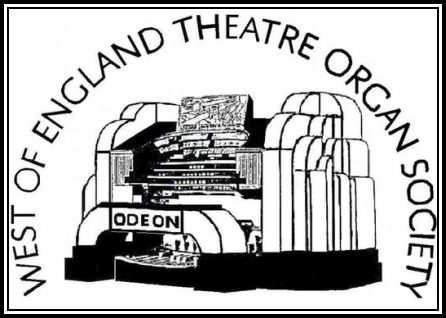
Organ Concerts were promoted at the Odeon by Neil Shepherd, however in 2003, he decided to no longer present them. In May 2003, following a Concert at the Odeon, Messrs Dutfield and Snowdon decided to form the West of England Theatre Organ Society (WETOS) with the aim of continuing the presentation of the Concerts and this was to continue until 2016.
In the early days of WETOS, seven or eight concerts were presented each year, each given by an Organist of distinction. Unfortunately, as a result of the falling audience numbers and with Concerts running at a loss, the number presented was reduced to a two a year. As a result, Messrs Dutfield and Snowdon decided to disband the WETOS in 2016.
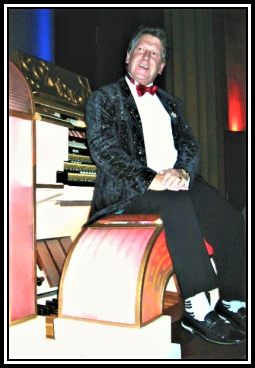 The Final Concert Presented by the WETOS at the Odeon Theatre/Cinema Weston Super Mare
The Final Concert Presented by the WETOS at the Odeon Theatre/Cinema Weston Super Mare
was given by The Welsh Wizard, Bryon Jones on the 13th November, 2016
-oOo-
However, in my opinion, the WETOS deserve a great deal of thanks and can take a certain pride in the fact that between 2003 and 2016, it presented a large number of Concerts at the Odeon that featured Theatre Organists of distinction.
-oOo-
Once the WETOS was disbanded, in 2017, The Theatre Organ Club (TOC) agreed to present two concerts a year in an attempt to keep the instrument in the public eye.
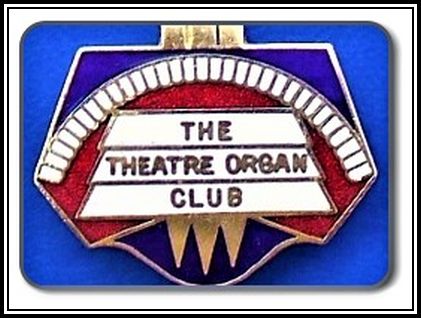
-oOo-
ANNOUNCEMENT THAT THE
ODEON THEATRE/CINEMA
WESTON SUPER MARE
WOULD SHUT ITS DOORS
-oOo-
Here is the email sent by Odeon Cinemas to the Press and other Media Sources announcing the closure of the Odeon Theatre/Cinema Weston Super Mare:
We are sorry to announce that, following a thorough assessment of all available options, we have made the very difficult decision to close ODEON Weston-super-Mare on June 5, as it is no longer viable to operate the cinema.
-oOo-
This announcement naturally meant that Organ Concerts would also come to an end at this venue. This was a great disappointment to those who continue to enjoy the sound of these remarkable instruments.
-oOo-
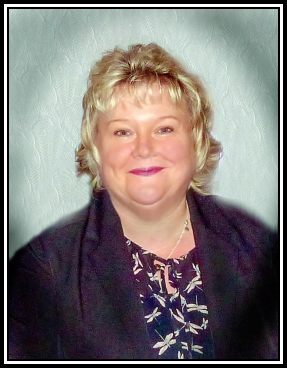 Ms Dawn Fisher, a former manager of the Theatre
Ms Dawn Fisher, a former manager of the Theatre
-oOo-
ACKNOWLEDGEMENTS
I would like to thank Messrs Michael Wooldridge, Len Rawle, Keith Beckingham, Simon Gledhill, David Ivory, Byron Jones, Ben Snowdon and Peter Simpson for sharing their thoughts on The Theatre, The Organ and The Final Concert.
I would also like to thank Mr. David Schuster of The Cinema Organ Society for allowing the photograph of the Solo Cello to appear here.
I would like to thank Mr. Paul Bland and Mr. Peter Simpson for their help in the preparation of this piece.
——-oooo000oooo——-
——oooOOOooo——
——oooOOOooo——
——oooOOOooo——
——oooOOOooo—-

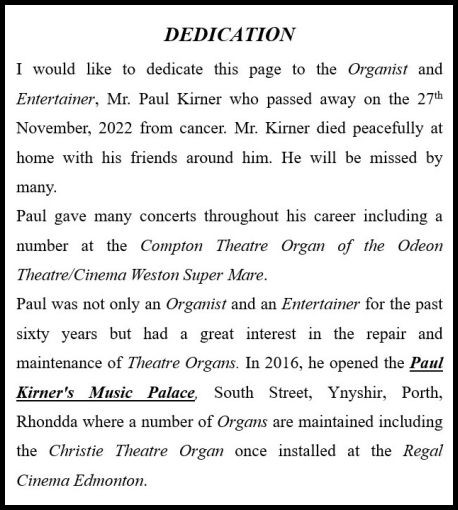 Paul Kirner playing The Theatre Organ once installed at the
Paul Kirner playing The Theatre Organ once installed at the 